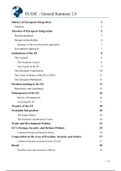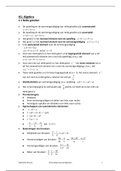Samenvatting
EU Governance in an International Context - Book & Lectures Summary
- Instelling
- Vrije Universiteit Amsterdam (VU)
This is a comprehensive summary of the course 'EU Governance in an International Context' in which all material from the book and the lectures is covered. Good Luck!
[Meer zien]







